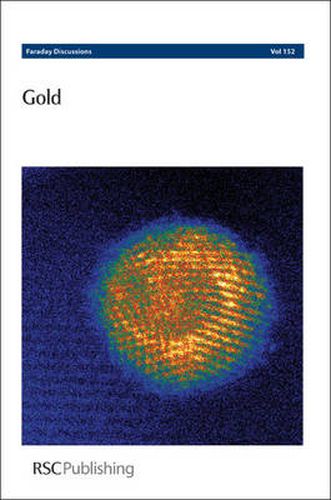Readings Newsletter
Become a Readings Member to make your shopping experience even easier.
Sign in or sign up for free!
You’re not far away from qualifying for FREE standard shipping within Australia
You’ve qualified for FREE standard shipping within Australia
The cart is loading…






Gold has been a topic that has fascinated mankind for millennia. It is the most noble of metals; it does not tarnish on exposure to air. However, until recently, gold has presented very little fascination for chemists, as its chemical inertness as a bulk metal appeared to provide very limited opportunities to open up new and exciting chemistries. The chemistry of gold was once relatively undeveloped, but this is no longer the case. The observation that gold, when sub-divided to the nanoscale, can be exceptionally active as a catalyst, has spurred a great number of discoveries. Gold now fascinates material scientists, catalysis, surface and synthetic chemists and theoreticians in great numbers. One reason for this is that gold catalysis provides a link between model systems that can be produced by materials and surface scientists, probed by theoreticians and the real systems used in catalyst discovery. The newly-discovered chemistry of gold can be used to gain a deeper understanding of catalysis, and how materials can be synthesized and stabilized at the nanoscale. The precise nature of the active sites and the mechanisms of the catalysed reactions of gold are as yet unknown. FD152 focused on the origins of high catalytic activity observed with gold nanoparticles. The aim was to bring together the catalysis and surface science communities with materials scientists and theoreticians, so that new insights could be gained.
$9.00 standard shipping within Australia
FREE standard shipping within Australia for orders over $100.00
Express & International shipping calculated at checkout
Gold has been a topic that has fascinated mankind for millennia. It is the most noble of metals; it does not tarnish on exposure to air. However, until recently, gold has presented very little fascination for chemists, as its chemical inertness as a bulk metal appeared to provide very limited opportunities to open up new and exciting chemistries. The chemistry of gold was once relatively undeveloped, but this is no longer the case. The observation that gold, when sub-divided to the nanoscale, can be exceptionally active as a catalyst, has spurred a great number of discoveries. Gold now fascinates material scientists, catalysis, surface and synthetic chemists and theoreticians in great numbers. One reason for this is that gold catalysis provides a link between model systems that can be produced by materials and surface scientists, probed by theoreticians and the real systems used in catalyst discovery. The newly-discovered chemistry of gold can be used to gain a deeper understanding of catalysis, and how materials can be synthesized and stabilized at the nanoscale. The precise nature of the active sites and the mechanisms of the catalysed reactions of gold are as yet unknown. FD152 focused on the origins of high catalytic activity observed with gold nanoparticles. The aim was to bring together the catalysis and surface science communities with materials scientists and theoreticians, so that new insights could be gained.